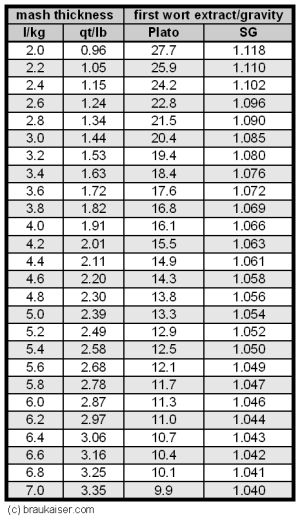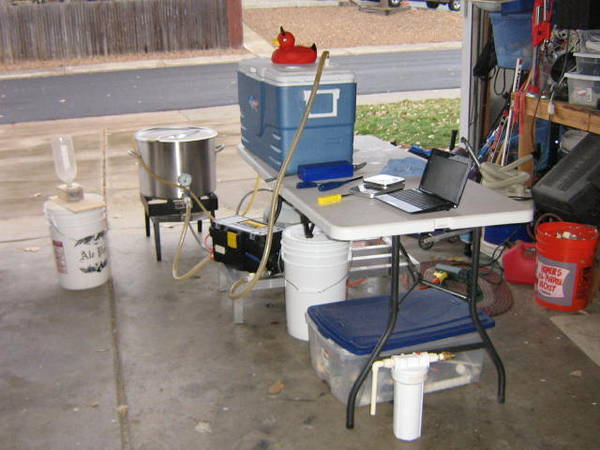jds
Well-Known Member
Well, my first no-sparge brew is in the holding tank (since I'm also no-chilling it). I hardly feel like I had a whole brewday!
I mashed in 11 lb of grains at 3 quarts per lb. 75 minutes later, it looked like conversion was more or less done. Gravity testing on the mash showed 1.033 at the end of the mash, which equates to around 75% mash efficiency per Kai Troester's chart, shown below:

The beer was a cream ale, and I was also trying to use precooked polenta for the first time. mis-estimating the amount of water in the polenta and having a few polentaballs in the mash probably contributed to the low mash efficiency, too.
After all was said and done, I ^h^h^h^hdrained and boiled down to 5.5 gallons at 1.042, which gave me a brewhouse efficiency of around 60% total. Not stellar, but I've learned I need a finer crush.
Thanks for the push in this direction, guys. No-sparging and no-chilling knocked an hour or more of time and plenty of effort off my brewday. I'll be interested to see how the beer turns out.
I mashed in 11 lb of grains at 3 quarts per lb. 75 minutes later, it looked like conversion was more or less done. Gravity testing on the mash showed 1.033 at the end of the mash, which equates to around 75% mash efficiency per Kai Troester's chart, shown below:

The beer was a cream ale, and I was also trying to use precooked polenta for the first time. mis-estimating the amount of water in the polenta and having a few polentaballs in the mash probably contributed to the low mash efficiency, too.
After all was said and done, I ^h^h^h^hdrained and boiled down to 5.5 gallons at 1.042, which gave me a brewhouse efficiency of around 60% total. Not stellar, but I've learned I need a finer crush.
Thanks for the push in this direction, guys. No-sparging and no-chilling knocked an hour or more of time and plenty of effort off my brewday. I'll be interested to see how the beer turns out.





























































